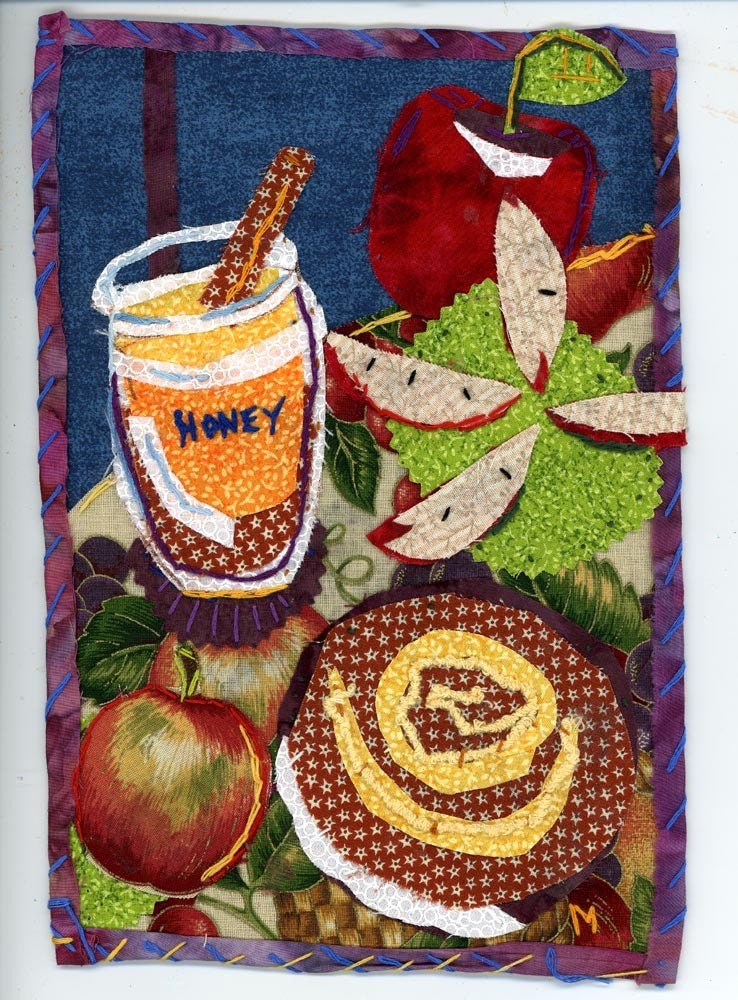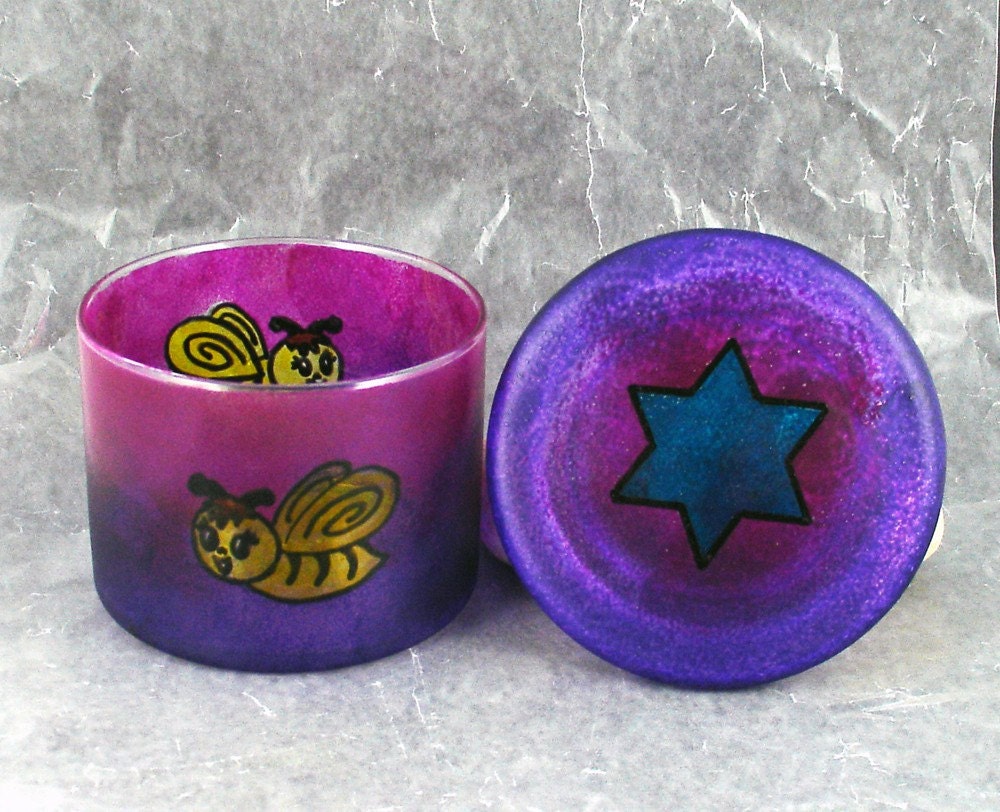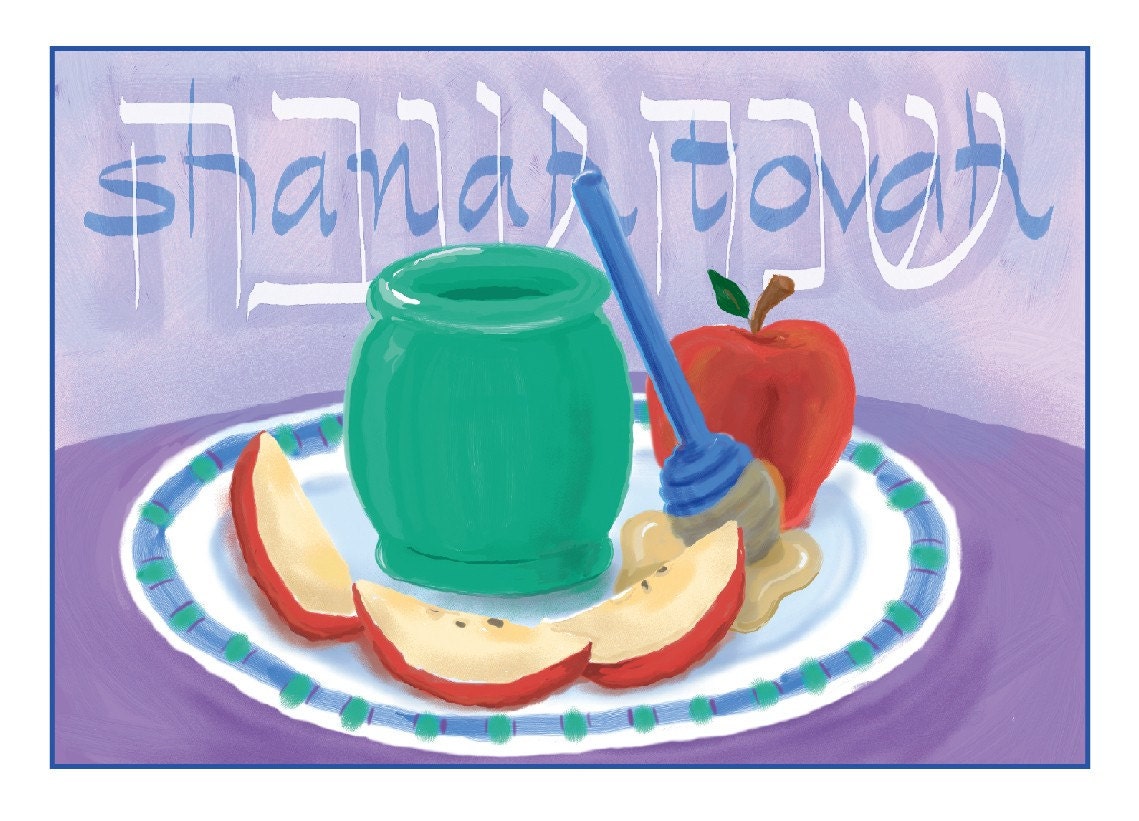The Jewish High Holidays of Rosh Hashanah and Yom Kippur are on their way! Rosh Hashanah begins next week at sunset, September 8, with Yom Kippur following on its heels, beginning the evening of Friday, September 17.
These are the most important chagim, or holidays, in the Jewish calendar. Rosh Hashanah, literally the “head of the year”, is also the Day Of Judgement. This is the time when our names are written into one of three books: good, “middle class”, evil. The books for good and evil are then sealed. During the window of 10 days leading up to Yom Kippur, people in the “middle class” book are judged, after which that book is also sealed.
 fabric collage by another creation
fabric collage by another creation
As with most Jewish holidays, our time is spent between synagogue and home. At home there are festive meals (what Jewish holiday doesn't have its festive meal?), with an emphasis on all things “sweet” to symbolize our hopes for a sweet year. A favorite in many homes is either challah bread (often baked with raisins) and apples dipped in honey. Our traditional pastry for this holiday is honey cake, rich with honey and savory spices such as cinnamon, nutmeg and ginger.
 honeypot by Creative Art Center
honeypot by Creative Art Center
The unique ritual to these holidays is the blowing of the shofar, a ram's horn, during services. The blowing of the shofar is a special mitzvah (commandment) written in the Torah. This is to remind us of Isaac, who was bound up by his father, Avraham, on Mount Moriah (now the Temple mount in Jerusalem). This recalls his merit in willing to be a sacrifice to G-d.
During Rosh Hashanah, we generally greet people with the wish “Shana Tova U’Metuka”, meaning “May you have a happy and sweet year.”
Yom Kippur, the Day of Atonement, is a fast day. We don’t eat or drink for about 25-26 hours (from sunset until the final blowing of the Shofar at the close of Synagogue services the following day). Over the course of the day, in between other parts of the liturgy, we repeatedly recite a special prayer of forgiveness for all our transgressions over the past year. All possible transgressions are named and we lightly touch our chest with our fist as we recite each one. The idea is to ask forgiveness for them all, in case we have forgotten about those we’ve committed during the past year.
After the final blowing of the shofar, we return home (or to someone else’s home) to break the prolonged fast with a festive meal.
Perhaps as a special New Year's gift to one another, we can post some of our favorite high holiday recipes in the comments section!
Shana Tova U'Metuka to everyone – may you be written into the book of life for good.
 greeting cards (8 pack) by lbolter
greeting cards (8 pack) by lbolter

2 comments:
Very well explained. Shana Tova to one and all!
Thanks, April. This post concisely tells what the High Holy Days are all about.
Happy and Sweet New Year to all.
I'll look for recipes.
Post a Comment